Oliver Clarke's Blog: Little Slices of Nasty, page 9
September 17, 2021
Fat Ollie’s Book by Ed McBain #BookReview
CriminOlly thinks: Not the greatest mystery in the 87th precinct series, but the humour has rarely been better 4/5
Title: Fat Ollie’s Book | Author: Ed McBain | Series: 87th Precinct #52 | Publisher: Mandarin | Pages: 368 | Publication date: 2002 | Source: Self-purchased | Content warnings: Yes | Tolerance warning: No
ReviewFat Ollie Weeks has grown and grown (no pun intended) as a character over the last few 87th Precinct books, so it feels completely appropriate that he pretty much gets a book of his own here. As you might expect, given Weeks’ personality, the emphasis in this novel is more on humour than on mystery. The result is definitely one of the lighter entries in the series, and a very enjoyable read as a result.
There are three stories woven together here: the shooting of a politician, a drug deal going bad, and a theft from Ollie’s car. It’s that last part that gives the book its name, the stolen item being the manuscript of a novel Ollie has written. That book (which is very short), exists within this one, and is an absolute hoot. His prose style is unique to say the least, but despite being terrible, McBain manages to make it very readable. The book is a written in the style of a police report about a stash of hidden diamonds. The thief, not recognising it as a work of fiction, tries to decipher the clues within to locate the jewels, which leads to some very amusing mix ups.
As you’d expect, being the focus of the book, Ollie develops further in its pages, from the horrific bigot he started out as, to someone a bit more sympathetic. A budding romance with a Latina cop helps with this, and it’s interesting to see how McBain manages to make such an awful character into something of a hero.
So the book has humour and colour to spare, but the mysteries are a little lacking. The one in Ollie’s book is deeply silly and the big man’s search for his missing manuscript is entertaining but lacking in tension. Even the main plot line, about the political assassination ends up being somewhat sub-par. It’s very easy to forgive that though, when the rest of the book is so much fun. It’s often laugh out loud funny and Ollie never been more entertaining.
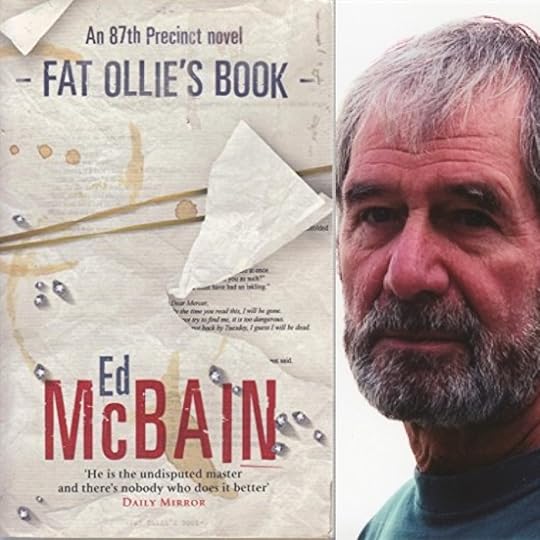 Synopsis
SynopsisAll at once, Fat Ollie Weeks had a truly brilliant idea…But as any “real” writer could tell you, that’s how inspiration strikes — with the sudden force of a violent crime. Known more for his foul mouth and short temper than his way with words, Detective Weeks has written a novel. But just as Isola is rocked by the murder of a mayoral candidate, the only copy of Ollie’s manuscript is stolen — and an all-too-real adventure begins as a thief follows Ollie’s fictional blueprint to find a $2 million cache of nonexistent diamonds. Now, the 87th Precinct races to bring poetic justice to a cold-blooded assassin — and someone’s about to add another chapter to the colorful career of Ollie Weeks, a cop who’s never played by the book…
WarningsContent Warning: Racism, transphobia
Tolerance Warning: All good
September 15, 2021
The Man Who Died Twice by Richard Osman #BookReview
CriminOlly thinks: More of the same from the Thursday Murder Club. An amusingly told cosy mystery that feels destined for Sunday evening TV. 3/5
Title: The Man Who Died Twice | Author: Richard Osman | Series: Thursday Murder Club #2 | Publisher: Penguin | Pages: 336 | Publication date: 16th September 2021 | Source: Publisher | Content warnings: Yes | Tolerance warning: No
ReviewPut simply, if you enjoyed Richard Osman’s ‘The Thursday Murder Club’, you’ll like this sequel just as much. If, like me, you thought it lacked something, you’ll probably think that ‘The Man Who Died Twice’ does too. It has all the strengths and weaknesses of the first book. It’s very funny, kind of sweet and reasonably mysterious. Given the huge success of the first one (millions of sales and film rights sold to Spielberg), it’s probably no surprise that Osman hasn’t changed the formula too much.
‘The Man Who Died Twice’ sees the four ageing amateur sleuths (Elizabeth, Joyce, Ibrahim and Ron) return. They’re joined again by their friendly local police detective Chris Hudson and his sidekick PC Donna De Freitas, and by Polish builder Bogdan who proves again to be a good man to have in a pinch. The mystery this time involves someone from ex-spy Elizabeth’s past, £20 million in stolen diamonds, a ruthless but slightly dull international arms dealer and the mafia.
The plot is fun, if a bit implausible, with at least one of its twists fairly predictable. The denouement is entertaining though, and Osman does a good job of tying multiple strands together in the finale. The comedy is laugh out loud funny in place, but wears a bit thin in others. This is particularly true of the sections from Joyce’s diary, which often feel like they’re slowing the plot down too much.
The characters continue to be the real draw here, and their development from the first book is well handled. Despite the silliness of it all, they’re convincing in their own right and very likeable. While they never really seem to be in any great danger, it is hard not to care what happens to them.
Amazingly, for a book that must have had a lot of focus from the publisher, there are a couple of mistakes that should have been picked up. Infra Red rather than Ultra Violet light is used to find a hidden message and at one point a character forgets someone’s name despite stalking them on Facebook in the previous paragraph. Not big issues, but surprising nevertheless.
Overall this is a fun read. It’s light, amusing and consistently entertaining. It might not be one for die hard crime buffs, but as a palate cleanser between more serious reads it has a lot to recommend it.
 Synopsis
SynopsisIt’s the following Thursday.
Elizabeth has received a letter from an old colleague, a man with whom she has a long history. He’s made a big mistake, and he needs her help. His story involves stolen diamonds, a violent mobster, and a very real threat to his life.
As bodies start piling up, Elizabeth enlists Joyce, Ibrahim and Ron in the hunt for a ruthless murderer. And if they find the diamonds too? Well, wouldn’t that be a bonus?
But this time they are up against an enemy who wouldn’t bat an eyelid at knocking off four septuagenarians. Can The Thursday Murder Club find the killer (and the diamonds) before the killer finds them?
WarningsContent Warning: Dementia
Tolerance Warning: All good
September 13, 2021
Harlem Shuffle by Colson Whitehead #BookReview
CriminOlly thinks: Convincing and deftly handled tale of crime and racial injustice in 1960s New York. 4/5
Title: Harlem Shuffle | Author: Colson Whitehead | Publisher: Doubleday | Pages: 336 | Publication date: 14th September 2021 | Source: Publisher | Content warnings: Yes | Tolerance warning: No
ReviewLike Colson Whitehead’s excellent ‘The Nickel Boys’, ‘Harlem Shuffle’ is a crime novel infused with rich commentary on racism in the United States. It’s not quite as good as the earlier book, but it still has a lot to recommend it.
Split into 3 distinct acts, the book follows the life of Ray Carney, an outwardly respectable New York furniture salesman who has a sideline in dealing in stolen goods. Ray’s cousin Freddie is even more deeply involved with local criminals, and gradually drags Ray down with him.
This is the best kind of book, one that mixes a compelling story with convincing characters and beating heart. Its power comes from the fact that Ray is a completely believable protagonist. His subtle mix of hardworking honesty and criminality makes perfect sense once you get to know him as a character, despite the apparent contradiction. The three way tension between doing the right thing for his cousin, doing the right thing for his wife and children and making easy money is both convincing and a useful plot device. The second act of the book, which revolves around the concept of Ray waking in the middle of the night to work on the books relating to his activities as a fence, handles this particularly well.
The story is set against the vivid backdrop of black New York in the 1960s. The detail is rich but never overwhelms the story and the blend of every day life and the fight for racial justice is brilliantly done. The civil rights movement is part of the lives of the characters, but only part – they still have to work and eat. Riots in Harlem play a big part later on in the book, but as something that is happening around the characters rather than an event they are actively involved in. Whitehead’s skill as a writer is in making the reader reflect on injustice without laying it on too thickly. His stories are about people first and foremost, which makes them all the more impactful.
 Synopsis
SynopsisTo his customers and neighbors on 125th street, Carney is an upstanding salesman of reasonably priced furniture, making a decent life for himself and his family. He and his wife Elizabeth are expecting their second child, and if her parents on Striver’s Row don’t approve of him or their cramped apartment across from the subway tracks, it’s still home.
Few people know he descends from a line of uptown hoods and crooks, and that his façade of normalcy has more than a few cracks in it. Cracks that are getting bigger all the time.
Cash is tight, especially with all those installment-plan sofas, so if his cousin Freddie occasionally drops off the odd ring or necklace, Ray doesn’t ask where it comes from. He knows a discreet jeweler downtown who doesn’t ask
questions, either.
Then Freddie falls in with a crew who plan to rob the Hotel Theresa — the “Waldorf of Harlem” — and volunteers Ray’s services as the fence. The heist doesn’t go as planned; they rarely do. Now Ray has a new clientele, one made up of shady cops, vicious local gangsters, two-bit pornographers,
and other assorted Harlem lowlifes.
Thus begins the internal tussle between Ray the striver and Ray the crook. As Ray navigates this double life, he begins to see who actually pulls the strings in Harlem. Can Ray avoid getting killed, save his cousin, and grab his share of the big score, all while maintaining his reputation as the go-to source for all your quality home furniture needs?
WarningsContent Warning: Racism
Tolerance Warning: All good
September 10, 2021
Red Screen by Stephen King #BookReview
CriminOlly thinks: A neat, Twilight Zone style horror short from a master of the art, and hey, it’s for charity. 4/5
Title: Red Screen | Author: Stephen King | Publisher: Humble Bundle | Pages: 17 | Publication date: 9th September 2021 | Source: Self-purchased | Content warnings: Yes | Tolerance warning: No
ReviewRed Screen is a short (like coffee break short) story from the grand old man of horror that’s available exclusively from Humble Bundle with all proceeds going to the American Civil Liberties Union. Readers can choose what they pay, although there is a minimum donation of 5 USD (or 3.61 GBP). That’s not exactly cheap for a short short story, but hey it’s all for a good cause and it’s the only way to read Red Screening, so if you’re a King completist it may be an easier decision.
As for the story itself, it’s good. Short, and hard to review without spoiling, but good. It takes of the form of a police detective interviewing a man accused of stabbing his wife to death; the interview taking an unexpected turn when it comes to the motive for the crime.
King’s short fiction is often (perhaps unsurprisingly) a lot leaner than his sometimes bloated novels. Red Screen is no exception, with the story quickly and effectively laid out. It very much has the feel of a Twilight Zone episode, right down to the fact that it’s mostly just two guys talking to each other in a plain room to keep production costs down. That feel extends to the cover, with it’s RKO Pictures vibe.
It’s intriguing, amusing and memorable, with the kind of ending that lingers. The prose it tight and the dialogue has a great crime fiction snappiness to it that helps bring the more mysterious elements of the story down to earth. Cynics might say that the author rattled it off in an afternoon to do his bit for the ACLU, but many authors say that writing good shorts is harder than writing novels. King is a master of the art, and this particular example of his bite sized fiction is up there with the better entries in his traditionally published collections. 5 bucks might be a lot, but you know you want to.
Red Screen is available here
 Synopsis
SynopsisWe’ve teamed up with legendary author Stephen King for a once in a lifetime opportunity. Presenting, Red Screen, a never before published work, exclusively available through Humble Bundle. In this unsettling short story, a cop interrogates a deranged plumber who just murdered his wife, only to discover something far more insidious. Pay what you want, and support the ACLU.
WarningsContent Warning: Domestic abuse
Tolerance Warning: All good
September 8, 2021
Edge – Apache Death by George G Gilman #BookReview
CriminOlly thinks: Another winning mix of appalling brutality, sly humour and punchy prose. 4/5
Title: Apache Death | Author: George G Gilman | Series: Edge #3 | Publisher: New English Library | Pages: 126 | Publication date: 1972 | Source: Self-purchased | Content warnings: Yes | Tolerance warning: Yes
ReviewThe problem with reading old pulp paperbacks is that they’re often pretty icky. I’ve fallen foul of this with Matt Helm (a bit rapey) and MIA Hunter (massively racist). When I picked up my recently arrived copy of the third novel in George G Gilman’s ‘Edge’ series and saw that the title had the word ‘Apache’ in it, I was pretty sure I’d be shaving a star off my rating for objectionable bigotry. Turns out I needn’t have worried quite as much as I did.
Like the previous two books, this is a brutal, nihilistic tale, where the hero’s aim is simply to survive to the last page. This time Josiah Hedges (Edge) winds up in a small town, Rainbow, which sits next to a US cavalry fort. There’s a fragile peace in place between the population and the local Native American tribes, which is broken when a local farming family are slaughtered. Throw into the mix rumours of a fortune hidden in the nearby hills and a foppish English gambler, and you’ve got the makings of another great western page turner from Gilman.
Like the other books this is an insanely violent tale, with a tonne of gory action throughout, culminating in a stunningly destructive ending. The English character adds some humour to the proceedings, with him and Edge indulging in some entertaining banter. Other characters come and go, rarely lasting very long but all adding a bit of colour.
Written in the 70s, and very much aping westerns from previous decades, this was never going to be a book held up as a great example of the portrayal of Native Americans. There are some interesting nuances though. The Apache characters are ruthless and bloodthirsty, but then everyone in these books is. In fact Edge seems to prefer their approach to life and combat than that of the white characters, who are far more likely to be duplicitous. “I’d try exactly what old Cochise is trying,” he comments at one point. What’s more, both Edge and the book seem very much aware that this isn’t a fight of the Native Americans’ making.
“They’re like beasts of the jungle,” a woman said to Edge.
“But it was their jungle first,” he answered.
 Synopsis
SynopsisViolence was a way of life for Josiah Hedges, better known as Edge. And the murdering band of renegade Apache that crossed the heartless avenger were about to find out they had made the biggest mistake of their lives. Because when you toyed with Edge, you were playing with killing fire!
WarningsContent Warning: Racism, sexual violence
Tolerance Warning: Extremely sexist, possibly racist
September 6, 2021
My Heart is a Chainsaw by Stephen Graham Jones #BookReview
CriminOlly thinks: A masterpiece of horror fiction and horror film criticism with an unforgettable heroine. This is the book The Final Girl Support Group wanted to be. 5/5
Title: My Heart is a Chainsaw | Author: Stephen Graham Jones | Publisher: Titan Books | Pages: 496 | Publication date: 7th September 2021| Source: Publisher | Content warnings: Yes | Tolerance warning: No
ReviewThere have been at least two other recent horror novels about slasher films. The James Patterson-lite The Final Girls by Riley Sagar, the criminally disappointing The Final Girl Support Group by Grady Hendrix (review here). In much the same way as film directors in the 80s suddenly rediscovered the monster movies of the 50s (The Thing, The Blob, Invaders from Mars, etc), it feels like sufficient time has passed for these decades old films to be re-invented by the modern creators who grew up with them.Stephen Graham Jones’s My Heart is a Chainsaw joins this mini-wave and the good news is that it’s far better than either of the books that preceded it. In fact it’s quite brilliant.
Set in 2015 (for reasons that become clear in the afterword), it follows slasher obsessed Jade. A 17-year old of mixed Native American/European heritage who struggles to find happiness and purpose in the small rural American town, a place about to be taken over by the millionaires who are building a secluded settlement nearby. Following the discovery of the body of a tourist, Jade’s slasher movie conspiracy theories seem to be coming true as locals start to die and a new girl she identifies as a final girl starts at her high school.
As in his excellent, The Only Good Indians, Jones mixes commentary on the plight of America’s rural poor with out and out horror. My Heart is a Chainsaw has an easier narrative style than the more complex earlier book. The plot moves like a freight train as Jade finds her suspicions ignored by the local sheriff and her teachers, even as the body count rises. The sense of the helplessness of teens in the face of dismissive adults is palpable and adds wonderfully to the overall tension. Jones also does a fantastic job of keeping the reader guessing as to the credibility of Jade’s theories.
Neurotic and misunderstood, Jade is a wonderful protagonist, one who it’s impossible not to root for, even when you don’t know whether to believe her. Her pain and frustration seep from the page and her determination to do what she believes is right, even when the cost to her is great, feels almost inspirational.
Best of all for horror fans, Jade’s dissection of slasher lore and constant references to classic movies is beautifully woven into the tale. In other books this can feel like a gimmick, here it works perfectly, drawing the reader into Jade’s world. What’s more, Jones’s knowledge of the sub-genre is impressive to say the least, meaning this may be the best ever blending of fiction and movie criticism.
It’s been a long time since a horror novel as fresh, readable and powerful as My Heart is a Chainsaw has come along. This is the book The Final Girl Support Group wanted to be. It intelligently examines and plays with the genre without ever descending into naval gazing, it’s gripping, gory and fun from page one, and in Jade it has a truly memorable, believable heroine.
 Synopsis
SynopsisJade feels like she’s trapped in a slasher film as tourists go missing and the tension between her community and the celebrity newcomers to the Indian Lake shore heads towards a tipping point, when she feels the killer will rise. Jade watches as the small town she knows and loves begins to head towards catastrophe as yachts compete with canoes and the celebrity rich change the landscape of what was designated park lands to develop what they call Terra Nova.
WarningsContent Warning: Racism, child abuse, self harm, incest, attempted suicide
Tolerance Warning: All good
September 4, 2021
Crime Noir: Humble Bundle have another great Hard Case Crime book bundle #News
If you’re visiting CriminOlly there’s a pretty good chance you like crime and pulp fiction. You do? Good, well stop reading this and get yourself over to Humble Bundle. They have a fantastic 33 book bundle of novels and graphic novels from my favourite publisher, Hard Case Crime.
For those who don’t know, Humble Bundle is a site that sells bundles of video games, software and e-books. Customers pay what they want, but the more you pay the more you get. Best of all some of the proceeds going to charity, in this case the American Civil Liberties Union, And Hard Case Crime is the best pulp imprint going right now, publishing a mix of rediscovered classics and new works.
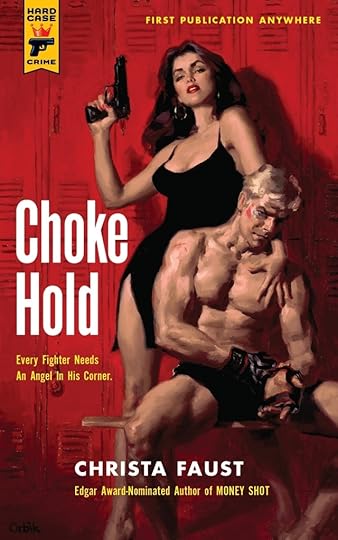
One of my favourite books in the bundle is Choke Hold by Christa Faust, the second book featuring her porn star turned detective Angel Dare. You also get Twenty-Year Death by Arie S Winter, which I’ve been meaning to read for ages.
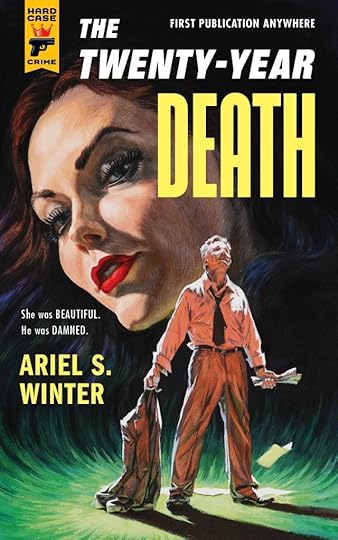
Other authors include Ed McBain, Max Allan Collins, Mickey Spillane, Erle Stanley Gardner and David J Schow.
If you’re not tempted already, check out my reviews for some of the included books:
Triumph of the Spider Monkey by Joyce Carol Oates
It also has another entry in the Tyler Cross series, one of which I reviewed here: Tyler Cross: Black Rock by Fabien Nury
Of course the downside is that you don’t get the amazing covers, but at the price it’s a hard deal to pass up on.
If you’re interest be quick – it’s only available until 23rd September 2021: Humble Bundle
September 3, 2021
Once Upon a Time in Hollywood by Quentin Tarantino #BookReview
CriminOlly thinks: An unexpectedly brilliant novelisation that builds on the movie and twists it in interesting ways. 5/5
Title: Once Upon a Time in Hollywood | Author: Quentin Tarantino | Publisher: Harper Perrenial | Pages: 400 | Publication date: 29th June 2021 | Source: Self-purchased | Content warnings: Yes | Tolerance warning: No
ReviewAs a kid and teenager I read A LOT of movie novelisations. A lot of this was down to me inability to see the movies they were based on. In a world before VHS (in my house at least), missing something at the cinema meant missing it until it turned up on network TV. Plus there as the pesky fact that many of the films I really wanted to see were ones forbidden by my parents. Books, on the other hand, were always fair game. So whilst even the mildest horror films were out of reach, my local library had the books based on David Cronenberg’s fucked up body horror S&M nightmare ‘Videodrome’.
It would be fair to say then, that movie novelisations have given me a lot of reading pleasure over the years, but honestly, they’re generally companions to the movie they are based on, rather than independent works of art. Fans might rave about Alan Dean Foster’s ‘Alien’ adaptation, but the gulf between movie and book is far greater than book to movie conversions. No-one ever does ‘novels that were better than the films they were based on lists’.
So Quentin Tarantino’s novelisation of his film ‘Once Upon a Time in Hollywood’ is a strange thing. Partly because movie novelisations aren’t really a thing any more, conversely because he’s a big name and it’s his first novel, also because it’s really kind of brilliant.
What makes it so good? Well most importantly it turns out Tarantino can write. I expected the dialogue to be good (because duh) but in reality it’s all good. Easy to read, inventive and fun. The words flow beautifully off the page and the story and characters grip.
Secondly, it’s very different from the film. Don’t get me wrong, a lot is the same, but the focus is different. The Manson family are less of a big deal. Cliff is the main character (rather than then dual billing that Pitt and DiCaprio had in the film), and also more of a dick than he seemed with Pitt’s grinning face slapped on his character.
Thirdly, the prose form allows Tarantino to indulge his film nerd side even more than the movie did. There are long sections in the book that read like articles from film journals. Some might find that off putting, but I kind of loved it. Even more so than the film, it feels like his love letter to Hollywood. The shift in focus away from Manson allows him to indulge that side even more and the result is a more tender piece. It still has a satisfying story to it, but it’s one more rooted in characters than action. Weirdly (and perhaps brilliantly) it ends up feeling like the book came first.
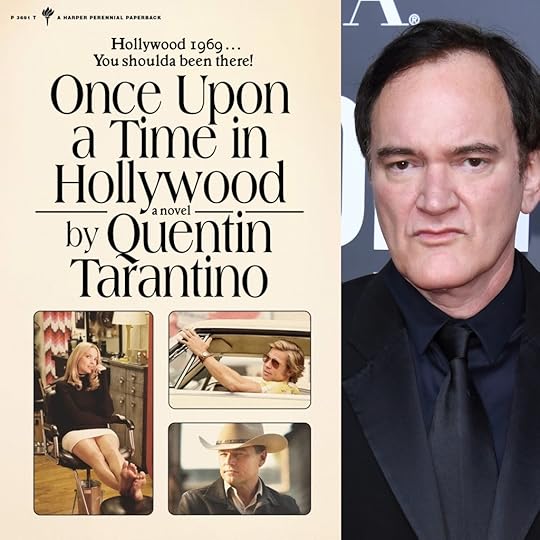 Synopsis
SynopsisRICK DALTON: Once he had his own TV series, but now Rick’s a washed-up villain-of-the week drowning his sorrows in whiskey sours. Will a phone call from Rome save his fate or seal it?
CLIFF BOOTH: Rick’s stunt double, and the most infamous man on any movie set because he’s the only one there who might have gotten away with murder….
SHARON TATE: She left Texas to chase a movie-star dream, and found it. Sharon’s salad days are now spent on Cielo Drive, high in the Hollywood Hills.
CHARLES MANSON: The ex-con’s got a bunch of zonked-out hippies thinking he’s their spiritual leader, but he’d trade it all to be a rock ‘n’ roll star.
WarningsContent Warning: Racism, alcoholism
Tolerance Warning: All good
September 1, 2021
Money, Money, Money by Ed McBain #BookReview
CriminOlly thinks: Highly enjoyable mix of humour, mystery and conventional thriller from the master, McBain 4/5
Title: Money, Money, Money | Author: Ed McBain | Series: 87th Precinct #51 | Publisher: Orion | Pages: 270 | ISBN: 9780752848396 | Publication date: 1st September 2001 | Source: Self-purchased | Content warnings: Yes | Tolerance warning: Yes
ReviewIn ‘Money, Money, Money’, McBain does that thing he sometimes does where he tries to weave a different style of book into one of his 87th Precinct mysteries. In ‘Ghosts’ it was supernatural horror, this time around it’s the kind of geopolitical thriller that was big in the 90s. For my money (lol), he makes a better fist of it this time around, but the shift in focus does feel a little jarring at times.
The first third or so of the book is a delight, with loads going on, including burglaries, a naked woman literally thrown it the lions and a random Secret Service agent. It’s wonderfully bewildering and I thoroughly enjoyed the feeling that McBain was deliberately messing with my head, combining a number of disparate elements that felt like they couldn’t be related, and yet clearly were.
As the book progresses, and the camera zooms out to give you a broader view, it works less well. The 87th Precinct suddenly feels like just a small part in a much larger world. I found it slightly odd, the sense that the walls surrounding this fictional place that I love were getting smashed down and reality was creeping in. There’s also a sub-plot about Arab terrorism that works to an extent, but feels somewhat less liberal in its outlook than you normally expect from McBain. On the other hand though, he tackles government abuses of power in a way that really works.
Those criticisms aside, it’s a cracking read. The complexities of the plot are handled with aplomb, it’s gripping, funny and compellingly readable. Fat Ollie is back and starting to thinking about starting as a career as a writer (a thread that will be picked up again in the next entry in the series, ‘Fat Ollie’s Book’). He’s as entertaining as ever, and has some brilliant banter with Carella. McBain also examines mortality, with Carella the most fragile we’ve ever seen him. This was at a time in McBain’s life when he was struggling with various health problems that would kill him a few years later. With that hindsight it’s a poignant read at times.
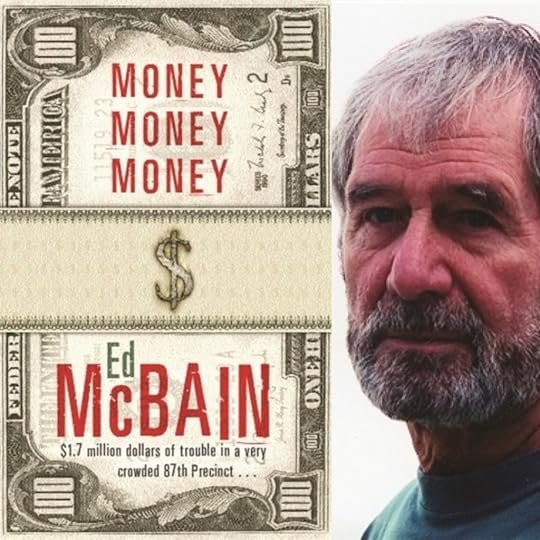 Synopsis
SynopsisIt is Christmas in the city, but it isn’t the giving season. A retired Gulf War pilot, a careless second-story man, a pair of angry Mexicans, and an equally shady pair of Secret Service agents are in town after a large stash of money, and no one is interested in sharing.
The detectives at the 87th are already busy for the holidays. Steve Carella and Fat Ollie Weeks catch the squeal when the lions in the city zoo get an unauthorized feeding of a young woman’s body. And then there’s a trash can stuffed with a book salesman carrying a P-38 Walther and a wad of big bills.
The bad bills and the dead book salesman lead to the offices of a respected publisher, Wadsworth and Dodds. This is good news for Fat Ollie, because he’s working on a police novel — one written by a real cop — and he’s sure it’s going to be a bestseller
WarningsContent Warning: Racism, drug abuse.
Tolerance Warning: Islamophobia
August 30, 2021
Tarnsman of Gor by John Norman #BookReview
CriminOlly thinks: Ridiculous, offensive, derivative but enjoyable pulp fantasy. 3/5
Title: Tarnsman of Gor | Author: John Norman | Series: Gor #1 | Publisher: Ballantine | Pages: 224 | Publication date: 1967 | Source: Self-purchased | Content warnings: Yes | Tolerance warning: Yes
ReviewTo say that John Norman’s ‘Gor’ books are problematic is an understatement. Set in a fantastic and brutal “Counter Earth”, they describe a society where slavery is a natural part of life (for both slaves and their owners) and women typically submit to men in S&M style relationships. The mix of pulp fantasy and misogynist philosophy made the books very popular in the 70s and 80s and has even spawned a Gorean sub-culture which lurks both online in places like ‘Second Life’. Despite being in his late 80s now, Norman is still writing the books, albeit at a much slower rate than he did in their heyday. The most recent, ‘Avengers of Gor’ is number 36 in the series.
I was fascinated by the books as a teenager, for reasons that will be obvious to anyone who has seen the covers of the Star books editions in the UK, but I don’t think I actually read any of them until I was well into adulthood. Like many pulp fiction works, they challenge the modern reader to answer the question – is it okay that I’m enjoying this horrible book?
Plot-wise this is typical sci fi/fantasy fare, with a definite nod to Edgar Rice Burroughs. Hero Tarl Cabot is a university professor in the USA (as was the author) who gets whisked off to Gor in a flying saucer type thing. Once there he meets his father (who had vanished when Tarl was a child) and becomes immersed in Gorean society. This involves him learning to fight and then going on a quest to steal a relic from a rival city state. Along the way there are plenty of slave girls, giant birds which people ride (called tarns), huge intelligent spiders and lots of fighting. We’re also introduced to the concept of the ‘Priest Kings’, mysterious creatures who rule the planet and restrict technology to keep it in a kind of medieval state.
Despite the promise of those covers, there’s no explicit sex at all, although there is a lot of S&M style paraphernalia, with the slave girls wearing handcuffs and hoods. There’s also a romantic sub plot involving Tarl and a princess, who is at first his sworn enemy but who he manages to dominate to the point she falls in love with him. You get the picture.
For all it’s appalling philosophising on gender politics, it’s an entertaining read. It moves at the right pace for this kind of thing, is packed with action and colour, and has the kind of energy that makes pulp adventures fun. Whilst it’s impossible to put the misogyny completely out of your mind, it didn’t ruin the book for me. Your mileage may vary.
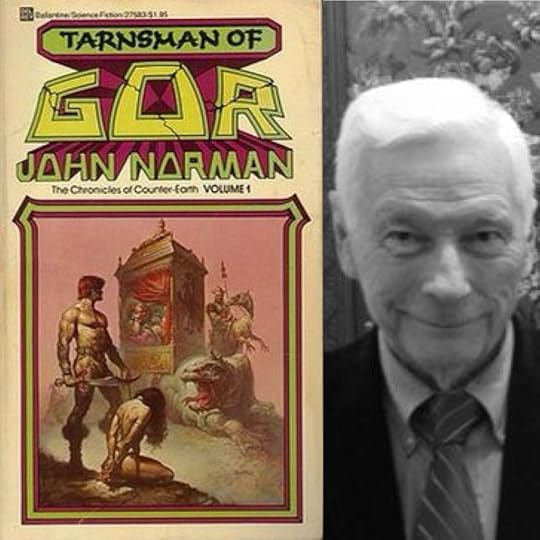 Synopsis
SynopsisTarl Cabot has always believed himself to be a citizen of Earth. He has no inkling that his destiny is far greater than the small planet he has inhabited for the first twenty-odd years of his life. One frosty winter night in the New England woods, he finds himself transported to the planet of Gor, also known as Counter-Earth, where everything is dramatically different from anything he has ever experienced. It emerges that Tarl is to be trained as a Tarnsman, one of the most honored positions in the rigid, caste-bound Gorean society. He is disciplined by the best teachers and warriors that Gor has to offer…but to what end?
WarningsContent Warning: Sexual violence.
Tolerance Warning: Misogynist.
Little Slices of Nasty
- Oliver Clarke's profile
- 1964 followers



